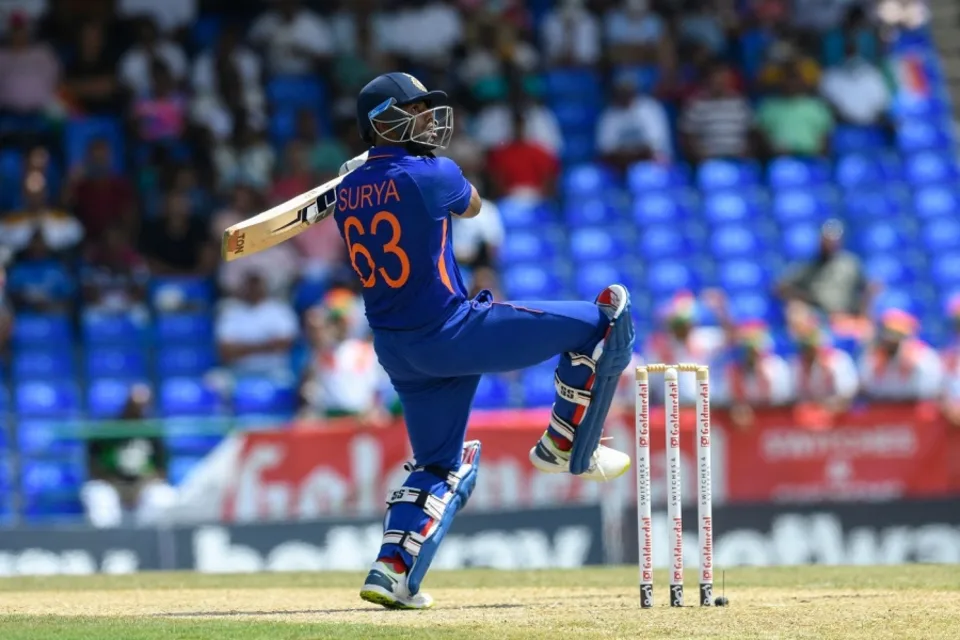Experiments and role clarity bring new answers to India’s T20 questions
Experiments and role clarity bring new answers to India’s T20 questions: India has played in more Twenty20 internationals than any other team in 2022 with 21. They’ve been able to field 27 players in the T20Is by balancing their workloads among formats.
Overall, 17 players got at least one chance in the recent five-game series in the West Indies.
With the Twenty20 World Cup in Australia coming up in October, India is likely to offer its starting XI more consistent playing time in anticipation of the Asia Cup.
In contrast, the team’s management, led by head coach Rahul Dravid, has been taking advantage of the abundance of games over the past few months to put their players through their paces in a variety of roles. India’s newfound aggression has persisted through a succession of captains (Rohit Sharma, Hardik Pandya, and Rishabh Pant). With so many new faces around, the team’s leadership has stressed the importance of open lines of communication.
Having failed to qualify for the T20 World Cup in Dubai, Rohit Sharma recently told Star Sports that the team “made it very obvious” that they needed to make changes to their approach to the game. “The guys had been sent a strong message, and they were prepared to rise to the task. If the team’s goals and direction are communicated clearly by the captain and coach, then everyone will work toward those ends. This can only be accomplished with the kind of independence and transparency that we’re providing.”
So, as India has been working to improve its T20 performance over the past several months, they have found the following crucial discoveries.
New opening options
There have been a total of seven different opening batsmen employed by India so far this year, with Suryakumar Yadav and Rishabh Pant being just two of them. While Suryakumar opened in the most recent series against the West Indies, Pant had some time at the top of the order during the Twenty20 Internationals played in England last month.
Although India’s choice to open with Pant and Suryakumar was motivated by a desire to give them more playing time in the middle, the move has actually resulted in the expansion of India’s 15-man team for the Asia Cup and, perhaps, the T20 World Cup.
Suryakumar and Pant are both available as opening batsmen as a backup plan in case Rohit or KL Rahul, who hasn’t played since the IPL finished, need to be replaced. Suryakumar scored 135 runs at a strike rate of 168.75 in just four innings of work as the opening batter. In St. Kitts, he shot 76 (his best) off of just 44 balls. Similarly, Pant is the only left-footed starter.
It’s possible that Deepak Hooda’s selection to the Asia Cup squad over Ishan Kishan, who had been tried as a reserve opener, was influenced by the team’s desire to have two middle-order batters who can open. India’s batting lineup is flexible thanks to Hooda’s presence. He has batted anywhere from 1-7 in the T20I lineup and yet managed to score 274 runs with a strike rate of 161. Hooda contributes off-spin bowling to India’s arsenal.
The availability of multiple options for India has increased with the recovery of both Hooda and Hardik from injury. Pant can complete games if he makes the team instead of Dinesh Karthik because he has batted everywhere from No. 3 to No. 7 during the past two months.
“We’d rather they not be limited to certain batting spots and instead be able to contribute wherever they’re needed. We’d like the boys to be adaptable, as there are two perspectives to consider.”
Strengthening the pace of stocks
With West Indies needing ten off the final over in the second T20I in St. Kitts, Rohit decided to hand the ball to the inexperienced Avesh Khan rather than his veteran death-overs expert Bhuvneshwar Kumar. This was so that Avesh could get some experience bowling under pressure in international cricket. India lost because opener Avesh bowled a front-foot no-ball. Bowling three overs (one in the powerplay and one in the death) in the next game, he gave up 47 runs.
Avesh got India the results they needed in their fourth game in Florida, taking two wickets in the first four overs while allowing only 17 runs. He praised the team’s management for sticking with him despite his two previous disappointing performances.
Arshdeep Singh is putting up a strong case to start for India in the Asia Cup, whereas Avesh may have only reached the squad due to injuries to Jasprit Bumrah and Harshal Patel. Just think, he didn’t even play his first Twenty20 International till the first week of July.
The fact that Arshdeep is the only left-arm pacer in India’s ranks at the present and has a flair for nailing yorkers at the death sets him apart and gives India a new option in the powerplay till Deepak Chahar returns from injury.
With an economy rate of 8.50 in the death overs since IPL 2021, Arshdeep is second best among the 22 bowlers who have thrown at least 15 overs, behind only Bumrah. Arshdeep’s IPL death-overs economy rate of 7.58 was second only to Bumrah’s 7.38.
A strong backup for Jadeja
Although Axar Patel isn’t included in India’s 15-man Asia Cup roster, he is one of three stand-by players, thus the team feels confident in having a capable replacement for Ravindra Jadeja in case of injury.
Axar hit 64 runs off 35 balls while batting near the end of the Indian lineup in the second ODI in the Caribbean, which ultimately resulted in a successful chase of 312 runs. Even though he didn’t spend much time at the crease in the next two T20Is, he proved his worth with an unbeaten 20 off of only eight balls in the fourth T20I, helping India push above 190 followings a middle-overs slump.

